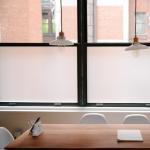Man has always strived for perfection and ideal, regularly inventing new and better universal building materials and tools. As a result of many years of testing and unlimited experience, today plasterboard has become the most in demand; it also has advantages and disadvantages. It is a universal construction finishing material, which is firmly attached to any construction site and is actively used at the stages of creating design, amenities and comfort inside any room with low humidity.
Leveling walls with plasterboard on mortar
Benefits of drywall
Drywall, primarily as a finishing material, has a number of advantages, which have led to its widespread use everywhere.

Its first advantage is lightness. The material is available in leaf form with standard dimensions 1.2x2.5 m, thickness 6, 9, 12 mm. Dimensions may vary depending on production technology and the manufacturer. Today from the well-known company Knauf you can find sheets with smaller sizes for ease of installation in small spaces.
Resistance to wet environments
Plasterboard walls also have their pros and cons when installed in wet areas. It is important to choose the right material here. There are at least 3 types of drywall available on the market, depending on the possible conditions operation:

- moisture resistant;
- refractory;
- ordinary.
Each of them has its own advantages, as do the designs made from it. If the fire does not burn the leaf, then direct impact water and the gypsum board will become completely unusable. But this will only happen to a lesser extent than with conventional material for dry rooms. Gypsum is gypsum, you can add hardeners and hydrophobic components to it, but it will not change its main property - hygroscopicity, as a result of which it swells.
This is another of the few disadvantages of drywall and structures made from it. Therefore, due to the possibility of flooding by neighbors above, partitions and ceilings are made of regular drywall building is not recommended. This can lead to additional financial and nervous waste. It is better to use materials that are more moisture-resistant, for example, foam blocks, and it is better to make the ceiling suspended or suspended without the use of plasterboard.
Drywall walls also have pros and cons in terms of versatility and practicality. By creating from this material frame technology design, it is possible to perfectly hide communication elements without much difficulty. Pipes, wiring, ventilation ducts. But again, if there is a threat of flooding, it is better to use gypsum board sheets. They have hallmark– green cardboard.

But the main advantage of drywall is that only from it can you make whole works of art and unique compositions:
- bar counters;
- decorative designs in Art Nouveau style;
- huge massive columns.
Disadvantages of plasterboard walls
Looks massive and durable structures from plasterboard are actually not such if they are exposed to direct impact. They can easily be destroyed with an ordinary carpenter's hammer, making one blow through hole in the sheet. This drawback will be significant when planning the installation of heavy hanging furniture on a wall or partition. Ideally, this should be thought through at the stages of creating the frame, investing in the guide and rack profiles wooden blocks or additional profiles. If this is not foreseen in advance, then the idea should be abandoned. Otherwise, you may end up with new repair problems and get rid of the equipment.

Regular Brick wall or foam block with a thickness of at least 15 cm can easily cope with the loads placed on it. All kinds of brackets, hinges and even simply screwed screws are held perfectly in the foam block, securely fixing the TV shelf. But due to the lack of perfection of the geometry of the blocks and the master’s shortcomings, and even the large weight masonry material, a block partition may become impossible or undesirable. Helpful information optionally,
When choosing a material for constructing thin walls and partitions, you should take into account a lot of parameters and weigh them carefully. But still, in most cases, drywall is best solution, because only from it can you make truly unique and inimitable
Anton Tsugunov
Reading time: 5 minutes
Which construction material Is plaster or drywall more preferable when leveling walls? This is one of the most pressing repair issues that must be resolved in advance so as not to encounter many problems that are inevitable with the wrong approach. Both materials show excellent results when leveling walls and ceilings and look great when completed finishing works, but both of them have drawbacks, and working with each of them has its own nuances.
To answer the question of which is better - drywall or plaster, it is worth comparing their characteristics and considering the pros and cons.
Types of drywall
On the modern construction market there are many types of drywall from Western and Russian manufacturers, intended for different purposes, differing in size, sheet thickness and performance characteristics:
- Standard gypsum board gray with blue markings for finishing walls and ceilings in rooms with low and normal level air humidity.
- Waterproof plasterboard GKLV with silicone granules, which includes antifungal components, intended for rooms with high levels of humidity and unstable air temperatures. GKLV color is green, markings are blue.
- Fire-resistant plasterboard GKLO pink or gray with red markings is used to protect the premises from fires. In an apartment, such material is sometimes chosen for a nursery.
- Waterproof and fire-resistant material GKLVO green with red markings for production premises With high level humidity and increased fire safety requirements.
Based on thickness, plasterboard is divided into wall (from 12.5 mm), ceiling (8–9.5 mm) and arched (6 mm).
Advantages of drywall over plaster
Drywall has the following advantages:
- High noise-absorbing properties. Plaster also has soundproofing characteristics, but not to the same extent.
- Convenient arrangement of heat and sound insulation. Materials are laid between the frame and the wall or ceiling.
- Sheathing a surface with plasterboard is easier and faster than leveling it with plaster, especially in the case of a ceiling that is particularly difficult to plaster.
- Drywall is indispensable when creating complex structures– arches, figures, interior and zonal partitions, multi-level ceilings.
- Suitable for walls of any curvature.
- Plasterboarding is a relatively clean way to level surfaces, leaving only dry debris behind.
Disadvantages of drywall
Among the disadvantages of gypsum boards:
- fragility of the erected structure;
- reduction of room area;
- the need to completely replace drywall in cases of flooding from the upper floors;
- difficulties with placing heavy objects on the walls, special fasteners are required, and in order to do so, you will have to think through ways to strengthen it.
- Cement-lime plaster has antibacterial properties, protecting the room from the appearance of mold fungus and microorganisms.
- Gypsum is a dry mixture consisting of gypsum powder with plasticizers. Gypsum plaster is plastic, vapor-permeable, environmentally friendly, lightweight compared to cement plaster, compatible with concrete and brick surfaces, does not require putty before painting or wallpapering.
- – can be silicone, mineral, silicate, used for finishing, allowing you to create unusual and unique surfaces. It makes no sense to compare such exclusive types of this material as travertino, Venetian, Moroccan plaster with plasterboard, since their cost significantly exceeds the most expensive types GKL together with finishing.
Advantages of plaster over drywall
Plaster is one of the most ancient building materials, the composition and properties of which have changed over the centuries. Modern mixtures with various additives are successfully used for both interior and facade work, maintaining the excellent appearance of the cladding for decades. Among its main advantages:
- High strength and reliability.
- Long-term operation.
- Space saving.
- Low material cost
- No problems with placement wall cabinets and any other items.
Disadvantages of plaster
Plaster also has significant disadvantages:
- Plastering is a labor-intensive and messy process.
- The need to use beacons to create a uniform layer.
- Risk of cracking when applying thick layers.
- Long drying time. When plastering in several layers, repairs may take several weeks.
- Plastering walls will be difficult for a beginner without special skills.
Which material to choose
Before you begin any repairs, there are a few things to consider: important factors to decide which of these materials is suitable in a particular case.
- If the speed of work is important and the repair must be completed quickly, you should give preference to drywall.
- It is better to level walls in rooms with high levels of humidity with cement or cement-lime plaster, which is an excellent base for all types of tiles and heavy wall structures - shelves, mirrors, water heaters. Plastered surfaces in the kitchen, bathroom and toilet will last for several decades.
- It is much more profitable to level surfaces with large differences with plasterboard rather than plaster. When using gypsum plasterboard, the curvature of the walls does not matter; when using plaster mixture you will have to use a lot of material.
What is cheaper – plaster or drywall? The cost of the plaster mixture is lower than the cost of plasterboard, plastering work will also require lower costs, but if the plastering is really good experienced master, his work will be paid higher. In this case, the price of work with these materials will be approximately the same.
- If the ceiling or walls need to be insulated, it is better to choose plasterboard.
HELPFUL INFORMATION: How to level walls with plaster: which plaster is better, level it with or without beacons (video)

At interior decoration Often there is a need to level the walls. This is especially true in old panel houses. But even a perfectly executed masonry of aerated concrete blocks must be prepared before wallpapering using plaster or plasterboard sheets (gypsum plasterboard). Below we will look at both options and discuss the question of which of these materials is better to choose.

Plastering walls
This is a building material based on gypsum (from Italian. stucco-gypsum, lime) or cement used for leveling walls and finishing. Often it contains additives that impart special properties: water protection, fire resistance, abrasion resistance, mineral components to impart texture, coloring additives. Plaster is sold in the form of dry mixtures in bags or ready solution in buckets.

Leveling plaster in a bag and decorative plaster in a bucket
Advantages of “wet” leveling
- Strength- one of its main advantages. Solution for cement based after setting it becomes a monolith with the strength of stone. Plastered surfaces can withstand the weight of shelves and cabinets and are not afraid of impacts.
- Durability. Plaster covered with finishing is practically not destroyed. For example, you can re-paste wallpaper for many years without repairing the rough finishing layer underneath.
- Well tolerated subzero temperatures , this is relevant for non-residential premises(garage, utility room, veranda) and cottages without heating.
- Moisture resistance plaster makes it a good choice for use in bathrooms, kitchens and other rooms where high humidity is possible. If you are flooded by your upstairs neighbors, the finishing will most likely deteriorate, but the walls underneath will remain intact. Made from natural lime plaster Tadelakt even make sinks and bathtubs.

Moroccan tadelakt plaster
- Space saving. For small defects in the walls, the leveling layer of the mixture will be minimal, which will significantly save room space.
- Universal base for any type of finishing work. Suitable for ceramic tiles, decorative plaster, painting and wallpaper.
Disadvantages of plastering
- Working hours. The layer of mortar must set and dry well before proceeding with the final finishing.
- Dirt. When mixing and applying the solution, it is quite difficult to keep the floor and overalls clean.
- High material consumption on curved surfaces.
- Labor intensity of work. It is difficult to plaster smoothly without experience.
Drywall: types and applications
Drywall- a universal building material, often used instead of plaster. It consists of plaster covered on both sides with sheets of cardboard. It also contains starch and surfactants. Standard sizes GKL sheet - width 1200 mm, length 2000/2500/3000 mm, thickness 9.5 or 12.5 mm.
Depending on your operational properties, drywall is divided into the following types:

GKLO. Contains mineral fibers and special. additives. Resistant to fire, used in facilities with increased fire safety requirements.
GKLV. Impregnated with water-repellent components, this allows it to be used in rooms with high humidity- baths and toilets. It is worth considering that with prolonged contact with water, the material may still suffer.
Regular plasterboard. Widely used in residential premises for leveling walls and ceilings, and creating decorative elements.

Decoration of walls and ceilings from gypsum plasterboard
When building or renovating a house or apartment, the question arises: how to level interior walls before decorative finishing? After all, the surface quality of enclosing structures is sometimes far from ideal. If you are building a house for yourself, then you still have the opportunity to control the quality of the walls, but in an old house or apartment there is no such opportunity.
The classic leveling method is plaster. A solution is prepared for it based on binders, fillers and water. Although the composition changes over time, the technology remains the same for many centuries - applying the mortar to the walls and leveling it with tools or mechanisms. If previously they used plasters based on and, now mixtures have been developed that are mixed and packaged in bags at the factory. Drywall is also used instead of plaster. This material is relatively new, but safe and easy to install. What is cheaper to level the walls, with plasterboard or plaster? What are the features of using these materials? Let's take a closer look.
Pros and cons of plaster
Plaster is made from a mixture of a binder (Portland cement, lime, gypsum, clay), filler (sand, stone chips, sawdust) and additives. Depending on the composition and manufacturer, it has different properties and is suitable for different applications, but there are unifying characteristics. The positive aspects include:
- Strength. Regardless of the composition, correctly applied plaster has sufficient strength characteristics to serve for a long time- up to several decades. It also better withstands external mechanical stress.
- Possibility of choosing a mixture for specific operating conditions.
- Existence decorative plaster, which does not require puttying or painting. This makes the work cheaper, although it is quite expensive in itself.
- Simplicity and reliability of fastening home electronics, appliances, furniture - it is enough to use standard dowels.
The disadvantages include:
- Difficult to apply. For good result You must have sufficient skills and experience. If the mixture is prepared at a construction site, it is necessary to carefully monitor the quality of the components and their proportions. Finished plaster Although it has predictable characteristics, it is more expensive.
- If the walls are very uneven, then a large leveling layer is applied. To attach it you need additional processing walls to improve adhesion, use of reinforcing mesh.
- The need to select the characteristics of the plaster mixture for the wall material.
- Since the process is “wet”, the floor and ceiling become more contaminated during work.
- After application, it is necessary to comply with the temperature and humidity characteristics of the air in the room for uniform and rapid drying.
Features of leveling with plasterboard (GK).
The second option for leveling walls and partitions is plasterboard sheets (GKL). When is it better to use drywall instead of plaster on walls? What are its features? The advantages of leveling these materials include:
- Easy to install. Despite the fact that working with drywall also requires skills, it is easier for a non-specialist to learn than plastering.
- Speed - if after applying the plaster you need to wait until it dries, then you can putty the HA immediately after fixing it.
- The distance from the rough wall to the front surface of the sheet is allowed to be large, while applying plaster larger than 50 mm is problematic and expensive.
- Between the rough wall and the HA sheet, you can lay a layer of insulation, which improves thermal characteristics designs.
- Possibility of use in damp rooms when using sheets of the appropriate type (moisture resistant).
- Since the process is “dry”, the room is less polluted during operation.
- In the empty space behind the sheet it is allowed to plant engineering Communication without gating - electrical wiring, water, sewer and heating pipes.
Flaws:
- The thickness of the structure takes away part of the usable volume of the room.
- The complexity of fastening furniture and household appliances. The drywall itself is fragile, which means it must be attached to the rough wall using special mortgages and brackets.
- The surface of gypsum plasterboard is easier to damage or destroy.
- Domestic rodents may appear in the space between the wall and the sheet (this is more relevant for private houses).
What is cheaper, drywall or plaster walls? It depends on the various factors. The cost of applying plaster on beacons is approximately equal to or more than the installation price plasterboard sheets using guides. The cost of the materials themselves also depends on the conditions of their use. For a plaster layer thickness of up to 10 mm, the cost square meter surface treated with dry mortar or standard drywall, are comparable to each other. However, if the layer increases, the plaster becomes more expensive. And vice versa - if the walls are smooth and do not require a large layer construction mixture, processing it will be cheaper.
It is advantageous to use gypsum plasterboard on uneven rough walls, when a large layer of plaster is required for leveling. If a small layer is required, then vice versa. The choice also depends on the cost of work in a particular region, the availability of materials, and the planned design of the premises. The choice is made after calculating and comparing the cost and features of both options.





